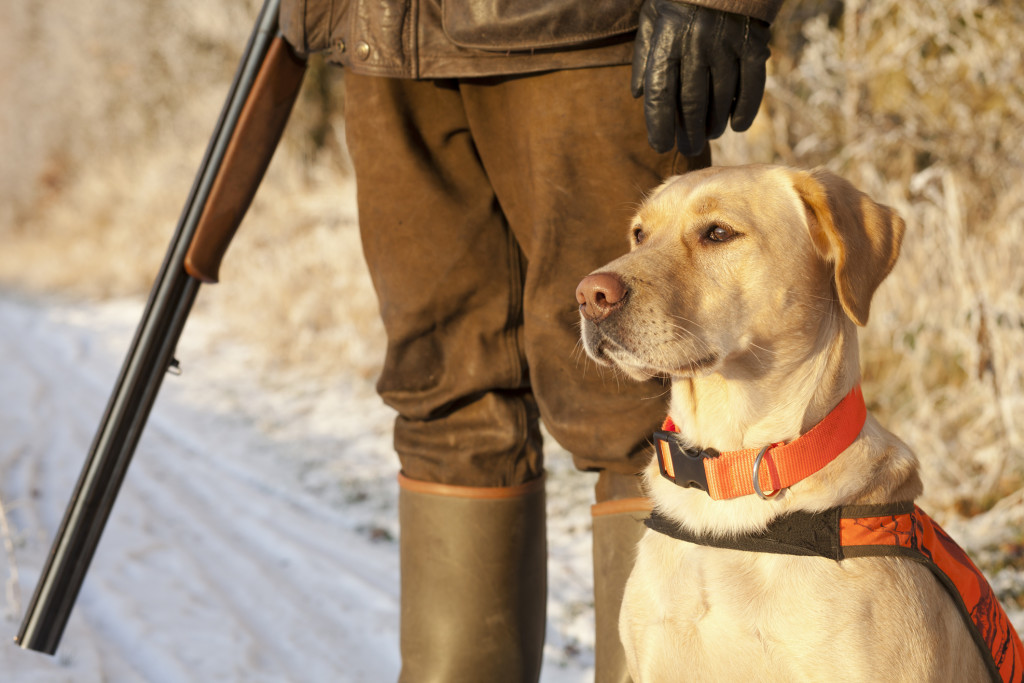“It’s all about the training!” Rick Sasek of the Milwaukee Dog Training Club passionately declared as I sat with him over a cup of coffee discussing his favorite subject, dogs. Rick, an avid bird hunter, knows what a satisfactory hunting dog looks like and, boy, does he know how to train them!
Bringing your dog on the hunt can be an enjoyable experience, but if your hunting dog isn’t well prepared, the only thing you’re coming home with is a loaded gun and a bruised ego. Many hunters overlook the importance of obedience training for their 4-legged friends at the expense of not only their hunt but at their dogs as well. Luckily for those hunters, there are a number of simple things you can do as an owner to assist in the potential of your hunting dog for a successful hunt and a well trained member of your family.
1. Train them young
Most owners welcome their dogs home at 7 weeks old. Through all the excitement of a new puppy, it’s common to forget that training your new pup is critical in the first few weeks if you want a competent hunting dog. “It’s hard to train an older dog. They take two times longer to train,” Rick explained when asked about the proper age to start training a dog. He recommends starting to train your dog at about 9 weeks old or when they know their name.
2. Socialize your dog
Socializing your dog is one of the most important things for proper training. Rick recommends taking your puppy to as many different populated locations as possible like a park or to obedience classes to get them used to having distractions. Hunting dogs can become distracted by a lot of different things when they’re out on the hunt: tall grass, nooks and crannies, and trees are all things that your dog can get into. Why wouldn’t they take interest in that? Bringing them to places with a lot of people and other dogs teaches them how to focus and how to act in the presence of others.
3. Practice with your pup
The hardest part about training your new pup is making an effort to train with them. After your pup has started to learn commands such as sit, stay, come, etc. it’s crucial to continue practicing those commands at home. It only takes 15 minutes each day to practice with your dog so they get used to hearing those commands. The important thing to remember is to have fun with your dog and let them know when they are doing something right! Another piece of advice Rick gives is to only say a command once. If your pup doesn’t listen the first time, you need to make them perform the command. Rick explained to me that if you repeat a command more than once, your pup will learn they only have to listen after you repeat yourself a couple of times. Just like people, dogs can learn to tune out voices too.
4. Rehearse your “vocals”
Having a “command” voice and a “happy” voice is a fundamental piece in training your pup. You should have two different voices; when you are giving a command and when you are praising your pup for doing a good job. Rick says it’s also necessary that only one person trains your pup in your household. If a dog is learning commands from two different voices, they will get confused and may have a harder time learning what they’re supposed to.
5. Follow the steps
As Rick emphasized a great deal, you should never push your dog beyond their skill level. Pushing your pup too fast is detrimental to their learning and can extend the time it takes to correctly train them. If your pup doesn’t understand a command, the best thing to do is take it back to the previous step and rebuild confidence in your dog. Starting over is the best possible option for properly training your hunting dog.
To learn more about training your hunting dog, visit http://www.milwaukeedog.com/ and come see Rick Sasek and the Milwaukee Dog Training Club at the Milwaukee Journal Sentinel Sports Show March 2nd-6th at the Wisconsin State Fair Expo Center.



Recent Comments